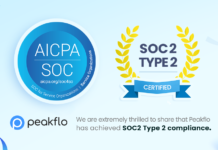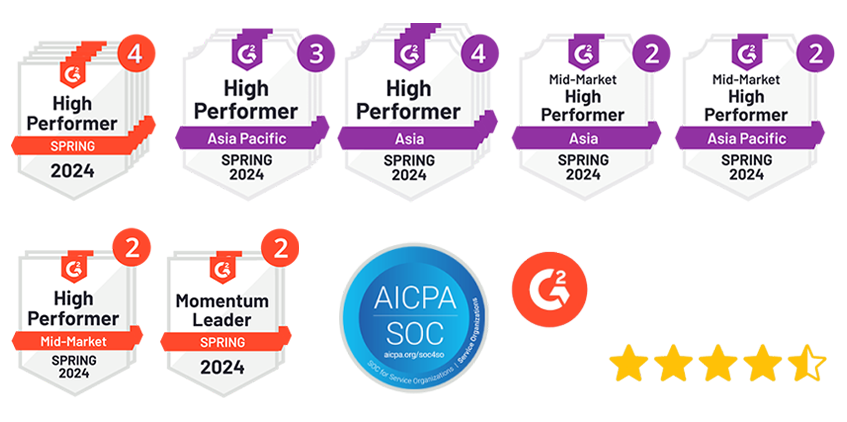Customer service bottlenecks can drain your business resources while frustrating your customers. Long wait times, repetitive queries, and overwhelmed support teams create operational headaches that affect your bottom line. Voice AI offers a practical solution to these challenges by enabling artificial intelligence systems to handle real conversations with your customers.
Voice AI refers to technology that can understand spoken language and respond with natural-sounding speech. These systems manage actual business tasks—from answering customer questions to processing appointments across phone calls, mobile apps, and websites. The technology goes beyond simple voice commands to engage in meaningful conversations that feel natural and helpful.
Voice AI agents tackle common business pain points effectively. These systems reduce operational expenses by automating routine customer interactions, allowing your existing team to focus on complex issues that require human expertise. The technology handles multiple conversations simultaneously, eliminating the capacity constraints that limit human agents. Most voice AI systems support over 23 languages fluently, helping businesses serve diverse customer bases without hiring specialized multilingual staff.
This guide will walk you through what Voice AI actually is, how these systems operate, and why businesses across industries are adopting this technology for better customer interactions. You’ll discover practical applications, real-world benefits, and key considerations for implementing voice AI in your organization.
Understanding Voice AI Agents
Voice AI agents represent a significant shift from traditional automated systems. These sophisticated platforms handle actual conversations rather than simple command recognition, creating more natural interactions for your customers and employees.
What is a voice agent?
Voice AI agents are software systems that communicate through natural speech patterns. These agents understand spoken language, interpret meaning, and respond with human-like conversation. Unlike basic voice recognition tools, they function as virtual team members capable of handling complex customer interactions with minimal supervision.
The technology combines several key components to create seamless experiences. Automatic Speech Recognition (ASR) converts spoken words into text, while Natural Language Understanding (NLU) interprets the actual meaning behind customer requests. Text-to-Speech (TTS) technology generates realistic voice responses. Large Language Models (LLMs) and machine learning algorithms enable these systems to process information and make decisions similar to human reasoning patterns.
Voice agents deliver practical business value through their core capabilities:
- Real-time processing of spoken language across different accents and speech patterns
- Direct access to company databases, knowledge bases, and frequently asked questions
- Contextually appropriate responses based on conversation history
- Task completion through voice commands alone
These systems go well beyond simple voice recognition. Voice AI agents actively interpret customer needs, understand conversational context, and complete specific actions autonomously. They handle reservation changes, appointment scheduling, payment processing, and complex workflows like technical troubleshooting or lead qualification. During these interactions, they maintain natural conversation flow with appropriate pauses, interruptions, and clarifying questions.
How voice AI differs from traditional IVR systems
Interactive Voice Response (IVR) systems have served businesses for decades, but voice AI operates on fundamentally different principles. Traditional IVR systems force callers through rigid menu structures—”press 1 for sales, press 2 for support”—while voice AI enables natural conversation from the start.
The core difference lies in how these systems process information. IVR systems follow predetermined decision trees with fixed pathways and limited options. Voice AI functions probabilistically, interpreting intent by analyzing language patterns, conversation context, and available data. This architectural difference creates several practical advantages:
Voice AI eliminates the frustrating navigation that characterizes traditional phone systems. Customers can simply explain their needs in their own words rather than guessing which menu option fits their situation. This natural approach reduces call abandonment rates as customers experience more engaging, productive conversations.
Autonomous decision-making capabilities set voice AI apart from menu-driven systems. Rather than forcing customers to select from predetermined choices, AI takes control of the conversation and makes informed decisions based on customer intent. When information is unclear, the system asks relevant follow-up questions like “Are you looking for one-time service or an ongoing plan?” to advance the conversation productively.
Traditional IVR systems remain static unless manually updated by developers. Voice AI continuously learns from each interaction, refining conversation flows, response phrasing, and problem resolution approaches. This ongoing improvement means voice agents become more effective over time, adapting to customer communication patterns and business needs.
Voice AI supports significantly broader use cases compared to traditional systems. These platforms handle everything from technical diagnostics to sales qualification to payment collections, often resolving complex scenarios without human intervention. The technology excels when customer needs vary widely and quick, accurate responses matter most.
How Voice AI Works Behind the Scenes
Image Source: AI Summer
Voice AI systems process human speech through multiple sophisticated stages, each happening within milliseconds, to create natural conversations. Understanding these technical processes helps explain why voice agents can handle complex business interactions effectively.
1. Capturing and recognizing speech
Voice AI systems begin by listening for specific wake words like “Hey Siri” or “Alexa” using keyword spotting algorithms. Once activated, the system captures audio input and preprocesses it to remove background noise and enhance clarity.
Automatic Speech Recognition (ASR) converts this acoustic signal into digital text. The system extracts acoustic features such as Mel-frequency cepstral coefficients from your voice patterns. Deep neural networks—including RNNs, CNNs, or Transformers—analyze these features to convert speech into accurate text representations.
Modern ASR systems overcome several technical challenges:
- Different languages and regional accents
- Varying speech patterns and dialects
- Background noise interference
- Different speaking speeds and volume levels
2. Understanding user intent
Natural Language Understanding (NLU) takes over once speech becomes text. This component interprets the actual meaning behind your words, going far beyond simple transcription.
The system executes several critical functions during this stage. Intent recognition determines what you want to accomplish. Entity extraction identifies specific information like dates, locations, or product names from your request. Context modeling maintains conversation history, enabling the system to handle complex, multi-turn dialogues.
Consider this example: when you ask a grocery store’s voice agent, “What time does the store close today?” the NLU identifies the intent as “find store closing time” and extracts relevant timing and location details.
3. Generating and speaking responses
After interpreting your request, the dialog manager formulates the most appropriate response strategy. This may involve querying external databases or APIs to gather necessary information.
Natural language generation (NLG) techniques create text-based responses tailored to your specific needs. Some systems use reinforcement learning to improve response selection based on successful past interactions.
Text-to-Speech (TTS) engines convert this response text into natural-sounding speech. Modern TTS systems employ deep learning models like Tacotron or WaveNet to generate voices with human-like tone, inflection, and emotional nuance. The result sounds increasingly natural and engaging.
4. Integrating with business systems
Voice AI agents achieve their business value through seamless integration with existing enterprise infrastructure. These systems connect with CRM software, knowledge bases, and other business tools to access real-time information.
This integration enables practical business capabilities. Voice agents can process real-time billing inquiries, handle secure payment processing, and manage technical troubleshooting workflows. When customers request account balances or want to make payments, the voice agent instantly accesses relevant systems to complete these tasks.
For technical support scenarios, voice agents guide users through diagnostic procedures, automatically create support tickets, and execute “warm transfers” to human agents when needed—passing along complete context to prevent customers from repeating information.
5. Learning and improving over time
Voice AI systems continuously improve through machine learning algorithms that analyze each interaction. This ongoing refinement helps them better recognize diverse accents and speech patterns and improve intent detection accuracy.
These systems improve through multiple methods: continuous learning with regular model updates and training, feedback loops that optimize response quality, and model adaptation for specific business use cases.
Developers monitor system effectiveness continuously and gather user feedback to guide improvements. Testing in controlled environments provides real-world data before full deployment. This commitment to continuous improvement ensures voice AI becomes more natural and effective with each customer interaction.
Why Businesses Are Adopting Voice AI
Companies across industries report measurable results from voice AI implementation. The business case for this technology centers on concrete financial benefits and operational improvements that directly impact your bottom line.
Cost savings and efficiency
Voice AI delivers substantial cost reductions, with businesses reporting cost reductions of 60-80% compared to traditional call centers. Per-interaction costs drop dramatically from USD 5.00-25.00 to just USD 0.50-5.00. Some organizations achieve savings exceeding 90%.
The technology handles routine inquiries effectively—processing up to 100% of simple Level 1 queries and 50% of more complex Level 2 inquiries without human intervention. This automation directly reduces staffing requirements and operational overhead. DoorDash exemplifies this efficiency, with its voice AI agent processing over 35,000 calls daily while maintaining a 94% success rate.
24/7 availability
Customer expectations have shifted toward immediate service access regardless of time zones. Voice AI provides round-the-clock support without the expense of overnight staffing or extended hours. This constant availability ensures customer needs are addressed across different time zones, eliminating wait times that drive customer frustration.
Golden Nugget Casino demonstrates practical results—their AI automation saves three days of agent time weekly by handling 34% of reservation calls. This always-on capability provides a competitive advantage for businesses that implement it early.
Scalability during peak times
Voice AI excels at managing unpredictable demand surges. While human agents handle one conversation at a time, voice AI systems process thousands of conversations simultaneously. This scalability maintains service quality during peak periods without overstaffing.
The cloud-native architecture enables dynamic resource allocation, scaling from 100 to 10,000+ concurrent calls instantly. Your costs align with actual usage rather than fixed staffing overhead.
Consistent and accurate responses
Voice AI maintains consistent service quality across all interactions. Modern systems achieve First Call Resolution rates exceeding 95%, reducing follow-up calls and customer frustration. This consistency eliminates human variability—AI agents don’t experience fatigue, take breaks, or have performance fluctuations.
These platforms refine their performance through continuous learning from each interaction. Customers receive reliable service regardless of when they contact your business or how complex their issue might be.
Voice AI Use Cases Across Industries
Image Source: Market.us
Voice AI adoption spans multiple industries, each finding unique ways to address operational challenges and improve customer experiences. The market growth reflects this widespread implementation—projections show the voice AI agents market reaching USD 47.5 billion by 2034 with a 34.8% compound annual growth rate.
Telecom: handling service requests
Telecom companies face high volumes of routine customer requests that strain support teams. Voice AI agents manage these inquiries effectively, handling tasks like adding phone lines, processing service upgrades, and resolving billing disputes from start to finish without human intervention. These systems understand telecom-specific terminology and can process account changes, tariff modifications, and customer follow-ups automatically.
The financial impact is significant—telecom providers can potentially reduce support costs by 30–50% through task automation. This cost reduction comes from eliminating repetitive manual work while maintaining service quality for customers.
Banking: secure transactions and support
Financial institutions use voice AI to provide secure, efficient customer service while addressing strict security requirements. The voice banking market reached USD 1.64 billion in 2024 and is expected to grow at a CAGR of 10.81% through 2032.
Security remains paramount in banking applications. Voice AI systems implement voice biometrics technology, analyzing unique vocal patterns to verify customer identity and prevent fraudulent access. These systems also integrate with existing CRM platforms to deliver personalized responses based on customer history and account preferences.
Healthcare: appointment scheduling and triage
Healthcare providers struggle with appointment no-shows and after-hours scheduling demands. Voice AI addresses these challenges through automated appointment scheduling, reminder systems, and basic patient triage. The results are impressive—these systems can reduce no-shows by up to 30% through automated reminders.
Clinics implementing voice AI report up to 50% fewer no-shows and 30–40% increases in completed bookings. The technology benefits various healthcare settings, from primary care practices to telehealth providers, by managing after-hours scheduling requests and handling routine insurance questions.
Travel: booking and itinerary updates
Travel companies deploy voice AI to automate customer service processes such as check-ins, booking modifications, and itinerary updates through natural conversations. This technology provides 24/7 support to travelers across different time zones, helping companies deliver personalized experiences while optimizing operational costs.
Smart homes: voice-controlled devices
Consumer adoption of voice-controlled smart home devices continues to grow rapidly. Approximately 70 million US households actively use smart home devices controlled by voice commands. This market expands at 10% annually, with projections reaching 94 million households by 2027.
Amazon Alexa alone connects to over 400 million smart devices, enabling users to control lighting, temperature, security systems, and other home functions through simple voice commands. This widespread adoption demonstrates how voice AI has become integral to daily life for millions of consumers.
Challenges and Limitations of Voice AI
Image Source: EDUCBA
Voice AI technology offers substantial benefits, but businesses should understand its current limitations before implementation. These challenges affect system performance and can impact user experience in meaningful ways.
Accent and language limitations
Voice recognition accuracy varies significantly across different accents and dialects. Research shows speech recognition systems have 16-20% higher error rates for non-native accents compared to standard native accents. This creates real accessibility barriers for businesses serving diverse customer bases.
English alone has over 160 dialects, and voice agents often struggle with regional variations or non-standard pronunciations. For businesses with global customer bases or diverse local markets, this limitation can exclude significant portions of their audience from seamless voice interactions.
Latency and real-time processing
Speed matters for natural conversation flow. Users begin detecting lag around 100-120 milliseconds, and conversation quality deteriorates quickly after that threshold. Natural dialogue requires response times of approximately 800 milliseconds.
Processing delays can accumulate across multiple stages—from speech capture to response generation—creating noticeable pauses that frustrate users and increase call abandonment rates. For businesses, these delays can undermine the customer experience that voice AI is meant to improve.
Security and data protection
Voice data presents unique security challenges that businesses must address carefully. Voice recordings function as biometric data, carrying significant privacy implications. These systems often operate in “always-listening” mode, which can inadvertently capture private conversations.
Compromised voice data enables serious security threats, including identity theft, account takeovers, and corporate espionage. Voice cloning technology continues advancing, making traditional voice authentication increasingly vulnerable to sophisticated attacks. Organizations must implement robust security measures to protect voice data and maintain customer trust.
High infrastructure costs
Voice AI implementation requires substantial upfront investment. Businesses face expenses for data collection, computational resources, system integration, and ongoing maintenance. Infrastructure upgrades, network optimization, and licensing costs create significant barriers to adoption.
These financial requirements can be particularly challenging for smaller organizations with limited IT budgets. The total cost of ownership includes not just initial setup but also continuous updates, monitoring, and technical support to maintain system performance.
Peakflo AI Voice Agent: Redefining Collections and Customer Communication
Peakflo AI Voice Agent is designed to help businesses transform how they handle customer and vendor conversations—especially in finance operations. Unlike traditional call centers that rely heavily on human effort, Peakflo’s AI-powered voice agents automate outbound and inbound calls with natural, human-like conversations. These agents can remind customers about pending invoices, confirm payment commitments, and even handle disputes in real time. On the payables side, they assist with vendor follow-ups, invoice clarifications, and status updates—freeing finance teams from repetitive tasks.
What sets Peakflo Voice AI apart is its deep integration with financial workflows. The agent doesn’t just talk—it pulls data directly from ERP and accounting systems, ensuring every conversation is accurate, up-to-date, and contextual. With multi-language support, businesses can scale across regions without hiring large, localized support teams. More importantly, it runs 24/7, allowing companies to stay connected with customers and vendors beyond business hours.
The impact is clear: faster collections, reduced DSO (Days Sales Outstanding), smoother vendor communication, and significant cost savings. Finance teams save time and redirect their focus toward strategic tasks instead of chasing payments or fielding repetitive calls. For companies looking to modernize their operations, Peakflo AI Voice Agent is not just a tool for automation—it’s a growth enabler that improves efficiency, cash flow, and customer relationships.
Want to try it yourself? Book a call with our experts to set up your own voice AI agents and get started today.
Conclusion
Voice AI has moved beyond experimental technology to become a practical tool for managing customer interactions. These systems handle real business functions—from processing payments to scheduling appointments—while maintaining natural conversations that customers find helpful rather than frustrating.
The adoption patterns across industries tell a clear story. Businesses implement voice AI not because it’s trendy, but because it solves specific operational challenges. Companies reduce support costs significantly while handling more customer inquiries simultaneously. The technology works particularly well for routine tasks that consume significant staff time, freeing your team to focus on complex issues that require human judgment.
What does this mean for your business? Voice AI offers practical solutions for common customer service challenges. Whether you’re dealing with high call volumes, extended wait times, or the need for after-hours support, these systems provide measurable improvements. The key is matching the technology to your specific needs rather than implementing it everywhere at once. This approach allows you to measure results, refine processes, and expand gradually based on actual performance rather than assumptions.
FAQs
Q1. What are the main applications of Voice AI?
Voice AI is used in various applications, including virtual assistants, customer service systems, smart home devices, and automated voice responses. It’s employed across industries like telecom, banking, healthcare, and travel for tasks such as handling service requests, secure transactions, appointment scheduling, and booking services.
Q2. How does Voice AI differ from traditional IVR systems?
Unlike traditional IVR systems that use rigid, menu-based pathways, Voice AI employs natural language processing to understand and respond to user queries conversationally. It can interpret context, make autonomous decisions, and continuously learn from interactions, providing a more flexible and user-friendly experience.
Q3. What are the key benefits of implementing Voice AI for businesses?
Businesses adopting Voice AI can experience significant cost savings (60-80% reduction compared to traditional call centers), 24/7 availability, improved scalability during peak times, and consistent, accurate responses. It also enhances customer satisfaction by reducing wait times and improving first-call resolution rates.
Q4. Are there any limitations to current Voice AI technology?
Yes, Voice AI faces challenges such as difficulties in understanding diverse accents and dialects, potential latency issues affecting real-time conversations, security and data protection concerns, and high infrastructure costs for implementation. These limitations can impact the technology’s performance and widespread adoption.
Q5. How does Voice AI ensure security in financial transactions?
In the banking sector, Voice AI systems implement voice biometrics to enhance security. This technology analyzes unique vocal patterns to verify a user’s identity, reducing the risk of fraudulent access. Additionally, these systems integrate with CRM databases to personalize responses based on customer history and preferences, further enhancing security and user experience.










![Why AI Sales Calls Are Making Good Sales Reps Even Better [2025 Guide] ai sales calls](https://blog.peakflo.co/wp-content/uploads/2025/09/65168cf6-3001-4733-8cbc-12d5684cf449-218x150.webp)


































